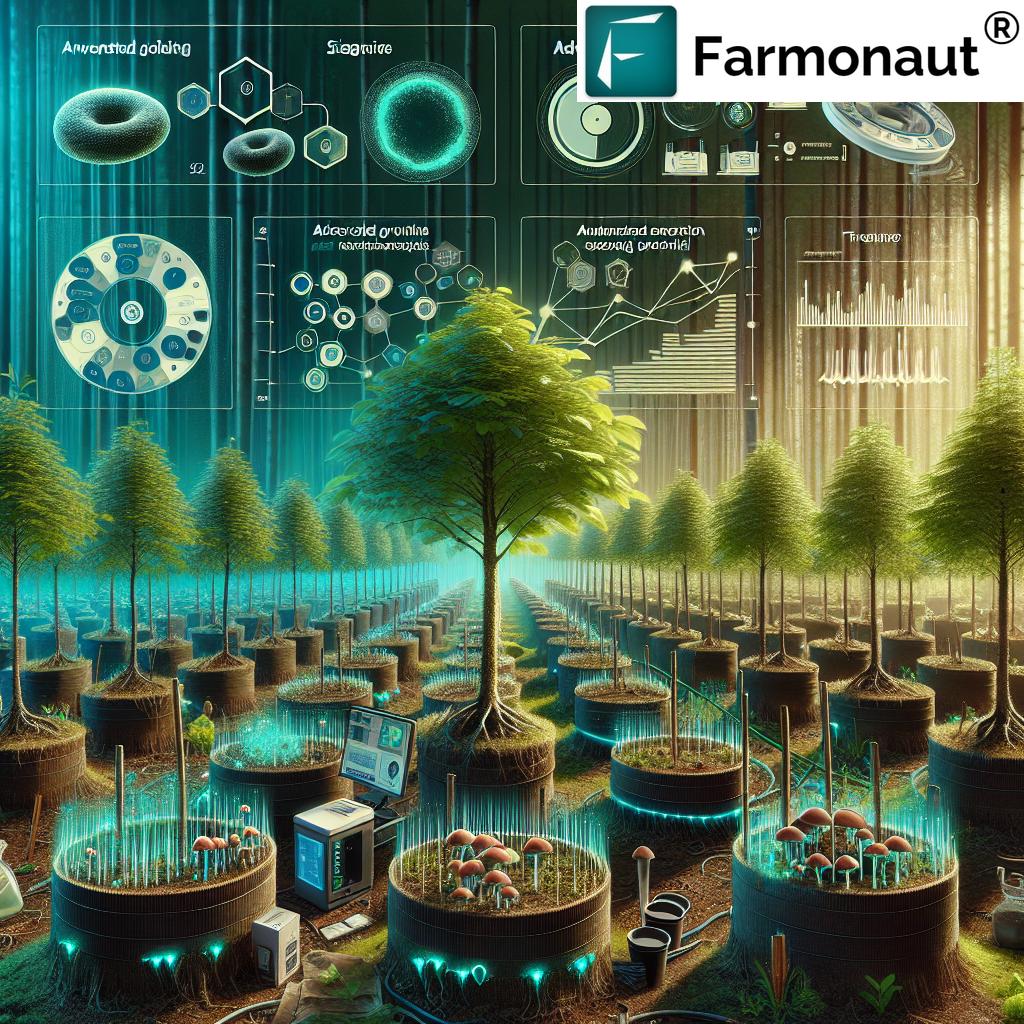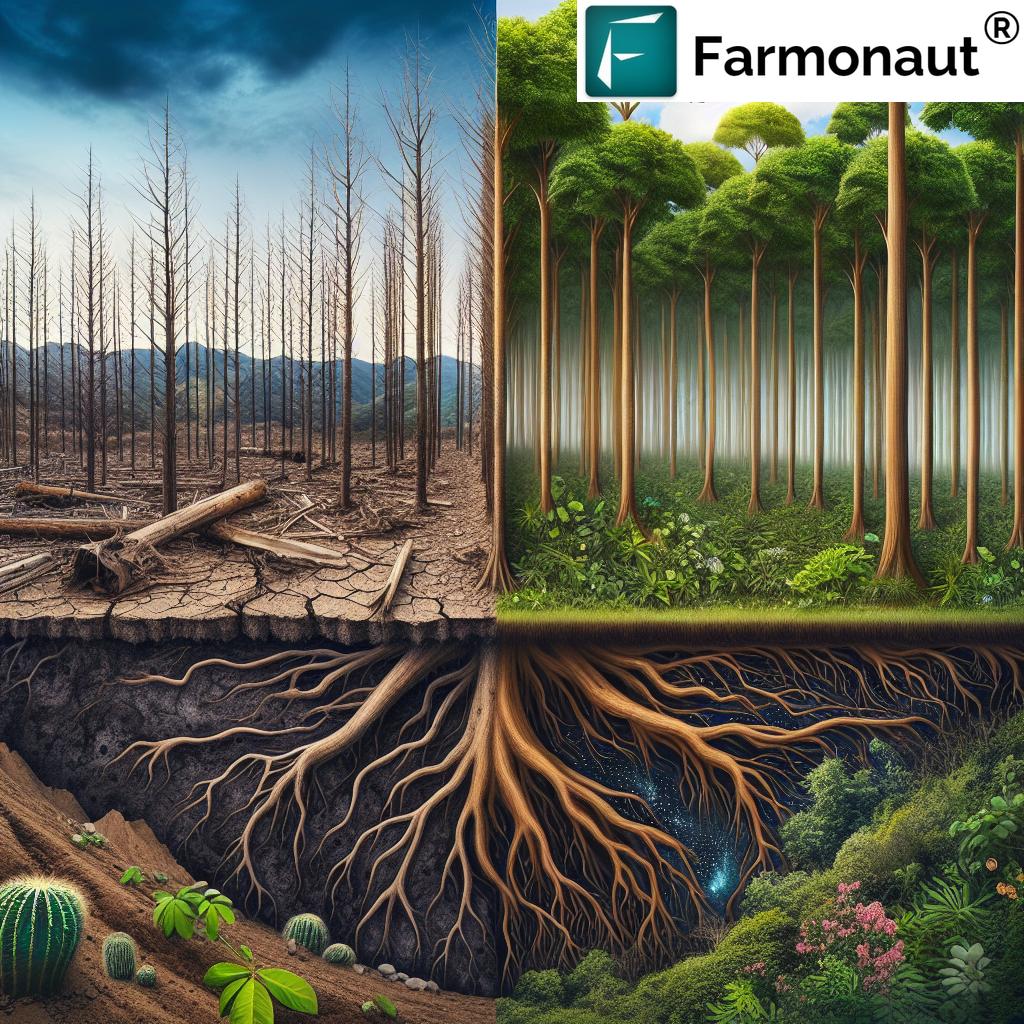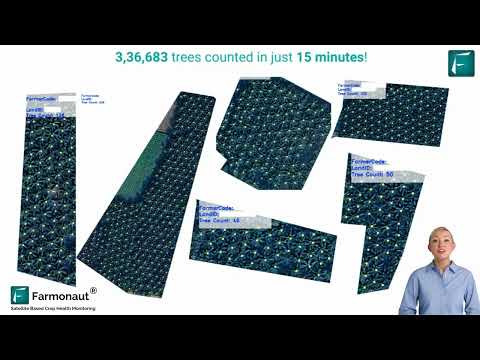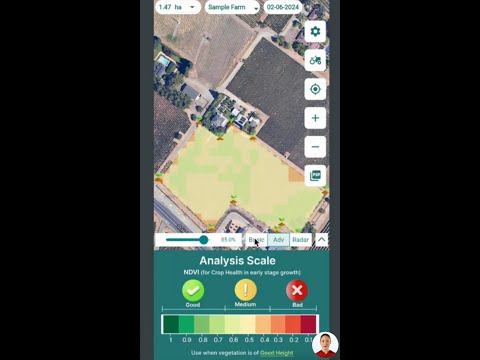Revolutionizing Reforestation: How Innovative Forestry Solutions Boost Tree Growth and Combat Climate Change
“Innovative fungal inoculation techniques boost tree seedling survival rates and growth by an average of 30%.”
In the face of climate change and deforestation, we are witnessing a revolutionary approach to reforestation that promises to transform our forests and combat global warming. At the forefront of this innovation is the Arbor Day Foundation, a global nonprofit organization dedicated to planting, nurturing, and celebrating trees. Through their Impact Fund, they are investing in groundbreaking solutions that not only accelerate tree growth but also restore microbial biodiversity in our forests.

As we delve into this exciting world of innovative forestry solutions, it’s important to recognize the role of technology in agriculture and forestry. Companies like Farmonaut are pioneering satellite-based farm management solutions, making precision agriculture more accessible. While Farmonaut focuses on crop monitoring and management, the principles of using advanced technology to improve agricultural practices align closely with the innovative approaches we’re seeing in forestry.
The Power of Fungal Communities in Reforestation
At the heart of this reforestation revolution is the use of native fungal communities to boost tree growth and survival rates. Researchers are utilizing DNA sequencing and advanced data analysis to identify these crucial microbial partners that have been degraded over time due to various land management practices.
Here’s how it works:
- Scientists identify native fungal communities that are optimal for forest development
- These fungi are used to inoculate seedlings in nurseries
- The inoculated seedlings are then planted with their fungal partners already established on their roots
- This symbiotic relationship boosts survival rates and accelerates tree growth
The results have been nothing short of remarkable, with an average increase in tree growth of 30%. This innovative forestry solution not only enhances biodiversity restoration but also significantly increases the potential for carbon absorption from the atmosphere.
The Impact on Carbon Sequestration
Carbon sequestration through forests is a critical component in our fight against climate change. By accelerating tree growth and improving survival rates, these innovative reforestation techniques are set to draw millions of tons of CO2 out of the atmosphere over the next decade.
Let’s take a closer look at how this compares to traditional reforestation methods:
| Reforestation Method | Seedling Survival Rate (%) | Average Tree Growth Rate (%) | Carbon Sequestration Potential (estimated tons CO2/acre/year) | Biodiversity Impact | Implementation Cost ($/acre) | Time to Forest Maturity (years) |
|---|---|---|---|---|---|---|
| Traditional Methods | 60-70 | Baseline | 2-3 | Medium | 1,000-1,500 | 30-40 |
| Fungal Inoculation Technique | 80-90 | +30% | 3-5 | High | 1,200-1,800 | 20-30 |
As we can see, the innovative fungal inoculation technique offers significant improvements across all metrics. The increased survival rate and faster growth not only lead to more efficient carbon sequestration but also accelerate the time to forest maturity.
Restoring Microbial Biodiversity
One of the most exciting aspects of this reforestation technology is its potential to restore microbial biodiversity in our forests. Healthy forests are complex ecosystems that rely on a diverse community of microorganisms, particularly fungi, to thrive.
By reintroducing native fungal communities, we’re not just planting trees; we’re rebuilding entire forest ecosystems from the ground up. This approach to sustainable forest management has far-reaching implications for biodiversity conservation and the overall health of our planet’s forests.
As we watch this video on unleashing nature’s power through fungi and tree growth, it’s clear that the potential of these innovative forestry solutions is immense. The symbiotic relationship between trees and fungi is a powerful force in nature that we’re now harnessing for reforestation efforts.
The Role of Technology in Modern Forestry
While the focus of our discussion is on innovative fungal inoculation techniques, it’s worth noting the broader technological advancements in forestry and agriculture. For instance, companies like Farmonaut are leveraging satellite technology and AI to revolutionize farm management. While Farmonaut’s focus is on crop monitoring and management, similar technologies are being applied in forestry for monitoring forest health and growth.
You can explore Farmonaut’s innovative solutions through their  or their mobile apps:
or their mobile apps:
For developers interested in integrating satellite and weather data into their own systems, Farmonaut offers an API with comprehensive developer documentation.
The Future of Reforestation
As we look to the future, it’s clear that these innovative forestry solutions will play a crucial role in shaping global forestry practices. The potential for accelerated carbon sequestration and biodiversity restoration is immense, offering hope in our fight against climate change.
“Groundbreaking reforestation technology has successfully revitalized over 6,500 acres of managed forests.”
This statistic alone demonstrates the real-world impact of these innovative techniques. As we continue to refine and scale these methods, the potential for global reforestation efforts is truly exciting.

Impact Investing in Forestry
The Arbor Day Foundation’s Impact Fund is a prime example of how impact investing can drive innovation in forestry. By supporting startups like Funga PBC, they’re not only advancing reforestation technology but also creating a model for sustainable investment in nature-based climate solutions.
This approach to funding forestry innovation opens up new possibilities for investors looking to make a positive impact on the environment while also seeking financial returns. As these technologies prove their effectiveness, we can expect to see increased interest from both public and private investors in funding similar initiatives.
Tree Growth Acceleration Techniques
While fungal inoculation is at the forefront of tree growth acceleration techniques, it’s not the only innovative approach being explored. Other methods include:
- Optimized nutrient delivery systems
- Genetic selection for faster-growing, more resilient tree species
- Advanced irrigation techniques
- Use of growth-promoting bacteria
These techniques, when combined with fungal inoculation, have the potential to dramatically accelerate reforestation efforts worldwide.
This video demonstrates how satellite and AI-based technologies, similar to those used by Farmonaut for crop monitoring, can be applied to tree detection and mapping in forestry. These tools are invaluable for monitoring the progress of reforestation efforts and assessing forest health on a large scale.
The Importance of Soil Health in Reforestation
While much of our focus has been on the trees themselves, it’s crucial to remember the importance of soil health in successful reforestation. Healthy soils are the foundation of thriving forests, providing essential nutrients and supporting the complex network of microorganisms that trees depend on.
Innovative reforestation techniques often include measures to improve soil health, such as:
- Adding organic matter to depleted soils
- Implementing erosion control measures
- Using cover crops to protect and enrich the soil
- Minimizing soil disturbance during planting
By focusing on soil health alongside tree planting and growth acceleration techniques, we can create more resilient and sustainable forests.
This video on unlocking soil organic carbon demonstrates the importance of soil health not just for agriculture, but for forestry as well. The principles of sustainable soil management are crucial for successful reforestation efforts.
Challenges and Considerations
While the potential of these innovative forestry solutions is immense, it’s important to acknowledge the challenges and considerations involved in their implementation:
- Scalability: Ensuring these techniques can be applied on a large scale
- Cost: Initial implementation costs may be higher than traditional methods
- Ecosystem impact: Careful monitoring is needed to ensure introduced fungi don’t disrupt existing ecosystems
- Long-term effects: More research is needed on the long-term impacts of these techniques
- Adaptation to different climates: Ensuring these methods work across various forest types and climates
Addressing these challenges will be crucial as we continue to refine and expand these innovative reforestation techniques.
The Role of Technology in Monitoring Reforestation Efforts
As we implement these innovative forestry solutions, monitoring their effectiveness becomes crucial. This is where technologies similar to those used by Farmonaut in agriculture can play a significant role in forestry.
While this video focuses on interpreting satellite data for agriculture, similar principles can be applied to monitoring forest health and growth. Satellite imagery and AI analysis can provide valuable insights into the progress of reforestation efforts, allowing for timely interventions and optimizations.
The Global Impact of Innovative Reforestation
As we look at the global impact of these innovative reforestation techniques, it’s clear that they have the potential to transform our approach to combating climate change. By accelerating tree growth and improving survival rates, we can:
- Sequester more carbon from the atmosphere at a faster rate
- Restore biodiversity in degraded ecosystems
- Improve soil health and water retention in forested areas
- Create more resilient forests that can better withstand the impacts of climate change
The ripple effects of these improvements extend far beyond the forests themselves, impacting global climate patterns, wildlife habitats, and even local economies that depend on healthy forest ecosystems.
Conclusion: A Green Revolution in Forestry
As we’ve explored throughout this article, innovative forestry solutions are truly revolutionizing reforestation efforts and our approach to combating climate change. From the use of fungal inoculation to boost tree growth, to the application of advanced monitoring technologies, we’re witnessing a green revolution in forestry.
The Arbor Day Foundation’s investment in these groundbreaking solutions demonstrates the power of combining scientific innovation with environmental stewardship. As these techniques continue to prove their effectiveness, we can look forward to a future where reforestation efforts are more efficient, more successful, and more impactful in the fight against climate change.
While companies like Farmonaut focus on revolutionizing agriculture through technology, the principles of innovation and sustainability they embody are equally applicable to forestry. As we move forward, the synergy between agricultural and forestry innovations will likely play a crucial role in our global environmental efforts.
By embracing these innovative forestry solutions and continuing to invest in nature-based climate solutions, we’re not just planting trees – we’re planting the seeds of a more sustainable and resilient future for our planet.
FAQ Section
Q: What is fungal inoculation in reforestation?
A: Fungal inoculation in reforestation is a technique where native fungal communities are introduced to tree seedlings before planting. These fungi form symbiotic relationships with the trees, helping them absorb nutrients and water more efficiently, leading to improved growth and survival rates.
Q: How much does fungal inoculation improve tree growth?
A: On average, fungal inoculation techniques have been shown to boost tree growth by about 30% compared to traditional reforestation methods.
Q: What are the benefits of these innovative reforestation techniques?
A: The benefits include faster tree growth, improved seedling survival rates, increased carbon sequestration, enhanced biodiversity restoration, and potentially shorter time to forest maturity.
Q: How does this technology impact carbon sequestration?
A: By accelerating tree growth and improving survival rates, these techniques allow forests to absorb more carbon dioxide from the atmosphere at a faster rate, potentially sequestering millions of tons of CO2 over the next decade.
Q: Are these techniques being used on a large scale?
A: While still in the early stages of widespread adoption, these techniques have already been used to revitalize over 6,500 acres of managed forests, with plans for expansion.
Earn With Farmonaut: Affiliate Program
Earn 20% recurring commission with Farmonaut’s affiliate program by sharing your promo code and helping farmers save 10%. Onboard 10 Elite farmers monthly to earn a minimum of $148,000 annually—start now and grow your income!





